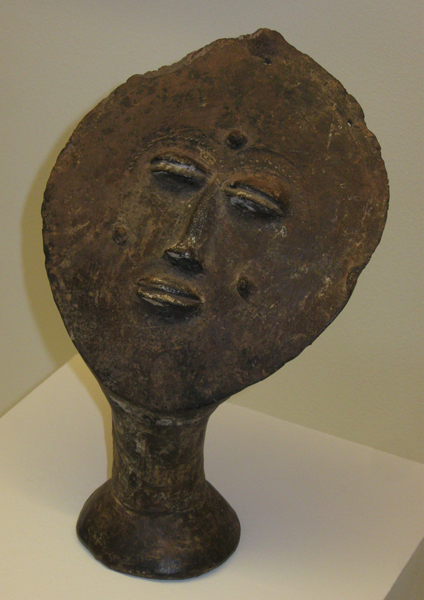This last week in class we did a lot of comparing different objects and different cultures. I decided to compare the Akan Terracotta Funerary Sculptures with the terracotta and brass Ile Ife heads.
The Terracotta Funerary sculptures were made by the Akan's in Ghana. These sculptures were used to commemorate the deceased. The clay included heads, heads attached to rudimentary bodies, and heads attached to funerary vessels. Most of the terracotta images were made by women. To others the sculptures do not appear to be exact realistic portraits, however the artists insist that it is a very close likeness of the deceased. Royal terracotta portraits were often displayed wearing fine cloth and and seated on chairs surrounded by terracotta and human attendants. The sculptures were then paraded through the streets to the royal graveyard. Until the last few decades the portraits did not display descriptive imitations of actual humans, but rather generic renderings of heads with a few individualizing characteristics, such as hair styles or scarification. Some heads were flat this was a reference to idealized beauty. Such heads are flat and thin, with simplified features. Others are fully round and naturalisticly modeled, these are simplified and idealized by showing neither age marks or blemishes. Many styles and types of heads are known suggesting developments and changes over several centuries.
The terracotta and brass heads are made by the Ile-Ife in Nigeria. Many of the heads discovered at Ile-Ife are complete works in themselves and are used on alters. In modeling the faces the artists have rendered the way flesh and muscle lie over bones. This naturalism embraces a degree of idealism. The brass heads show the same idealized naturalism as the terracotta heads. Like the terracotta heads they display the same idealized naturalism. The eyes, lips, and ears are styled according to ideal models. But the features are still individualized. The face has vertical striations found on many terracotta and brass heads made by the Ile-Ife. These markings are thought to be scarification or they may be purely an aesthetic device. There are also holes along the hairline probably used to attach a crown. Others have holes on the face just above the jaw line and across the upper lip, probably for attaching facial hair to make it look even more realistic or a beaded veil to hide the lower portion of the face. While many of the heads found at Ife once formed part of a larger figure, from most of these only fragments have survived.
Both of these sculptures portray idealism. Showing what is beauty. Even though the funerary sculptures look so abstract that we couldn't understand how it could possibly look realistic of a person. It could be a realistic portrayal of the persons personality. They're both made out of terracotta, and both have very intricate details or individualized characteristics. They're both made to honor people or a specific person that has died.





These are good choices for comparison, and you discussed the main points. A few tics: no apostraphe s for plurals, Ile-Ife is a place; the people were probably ancestors of the Yoruba.
ReplyDelete